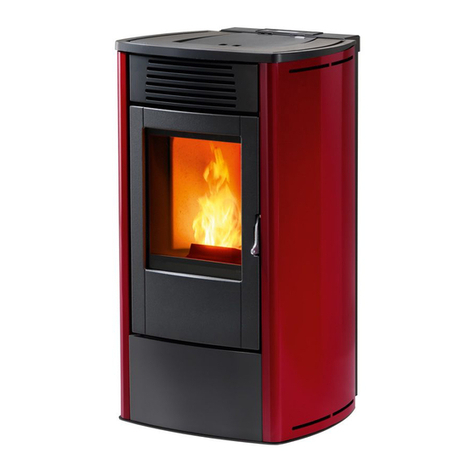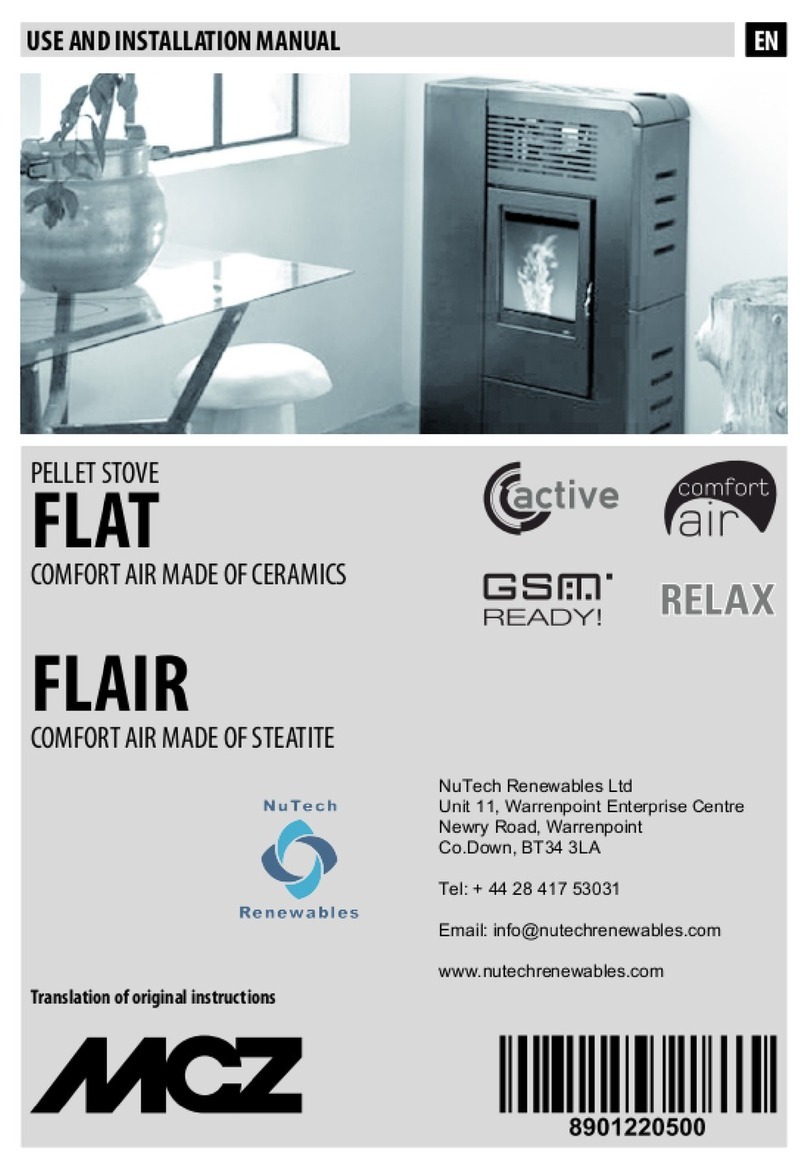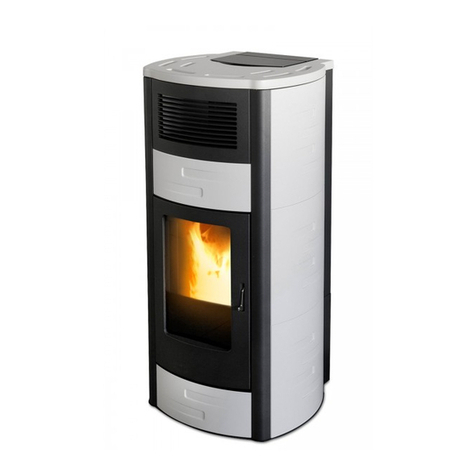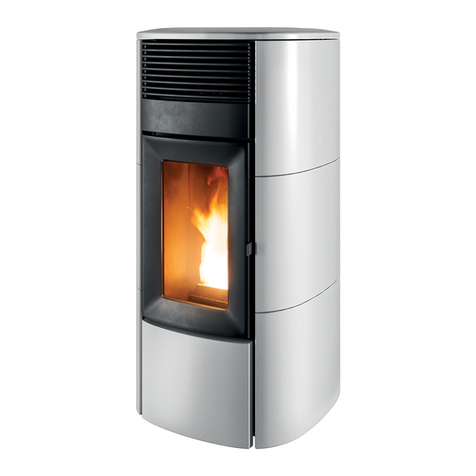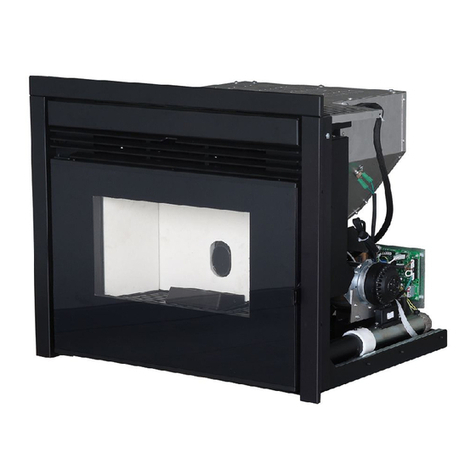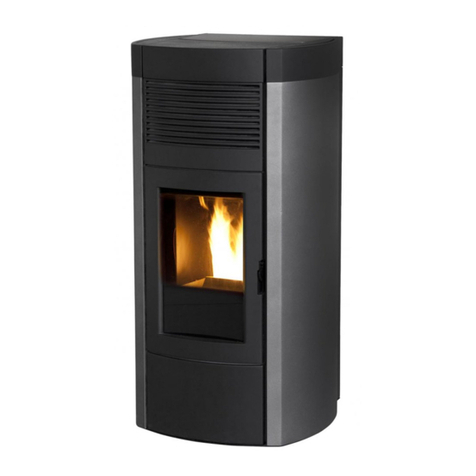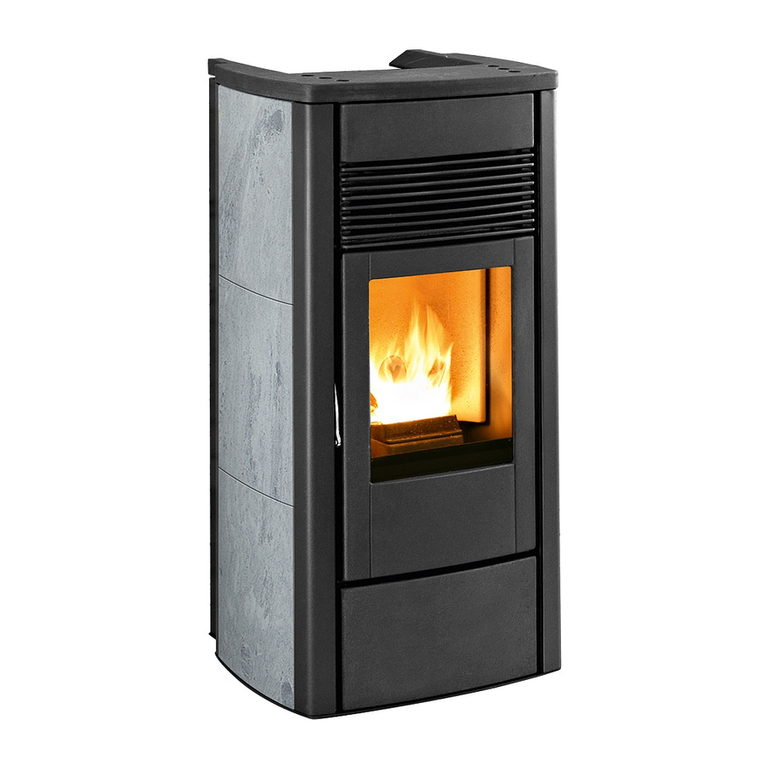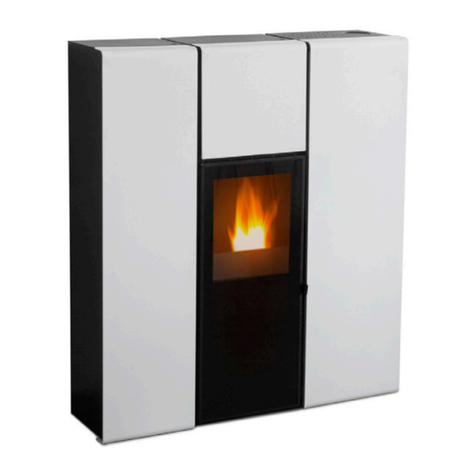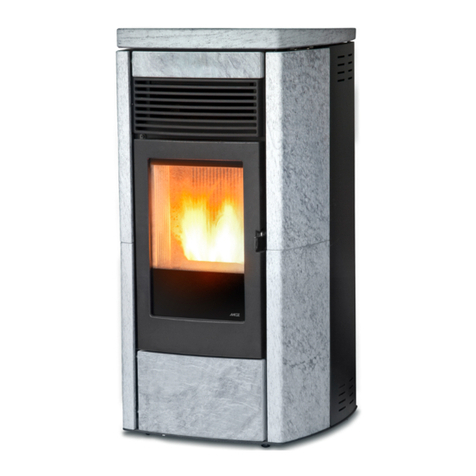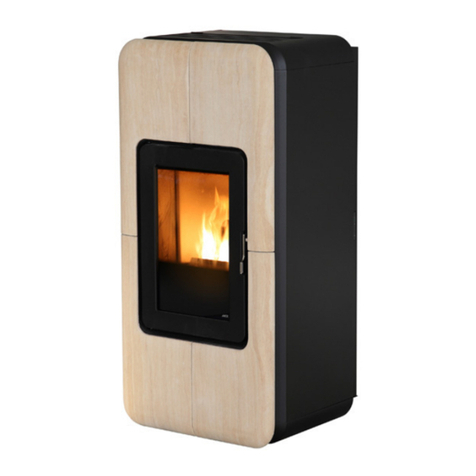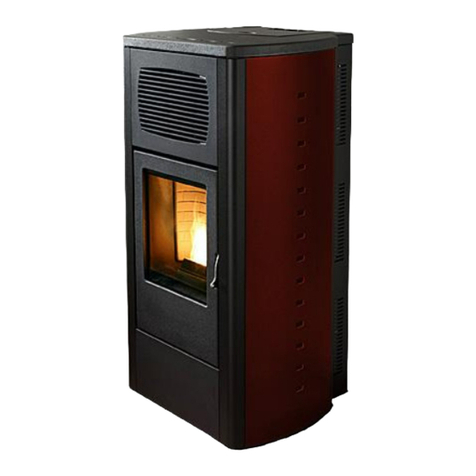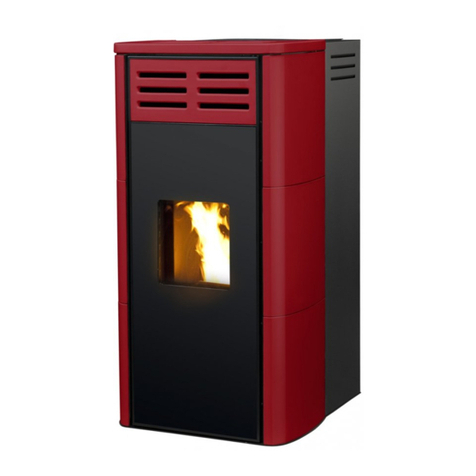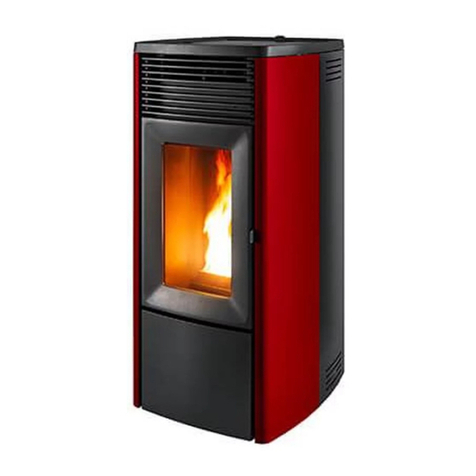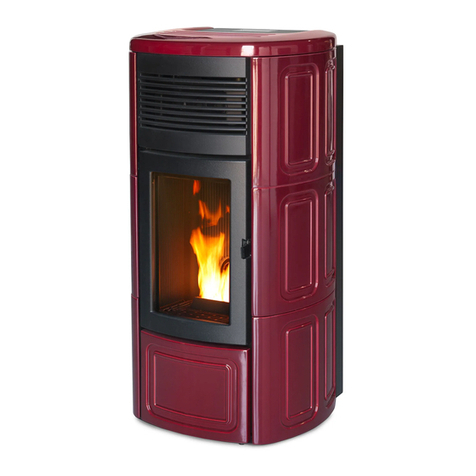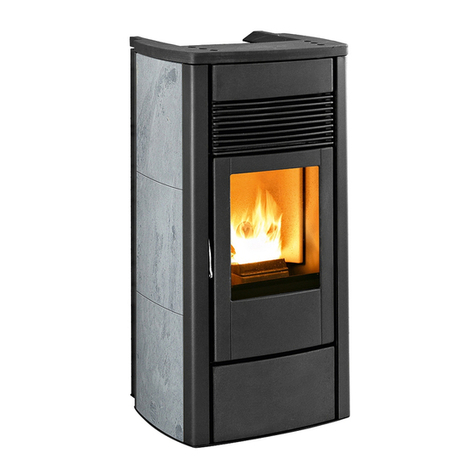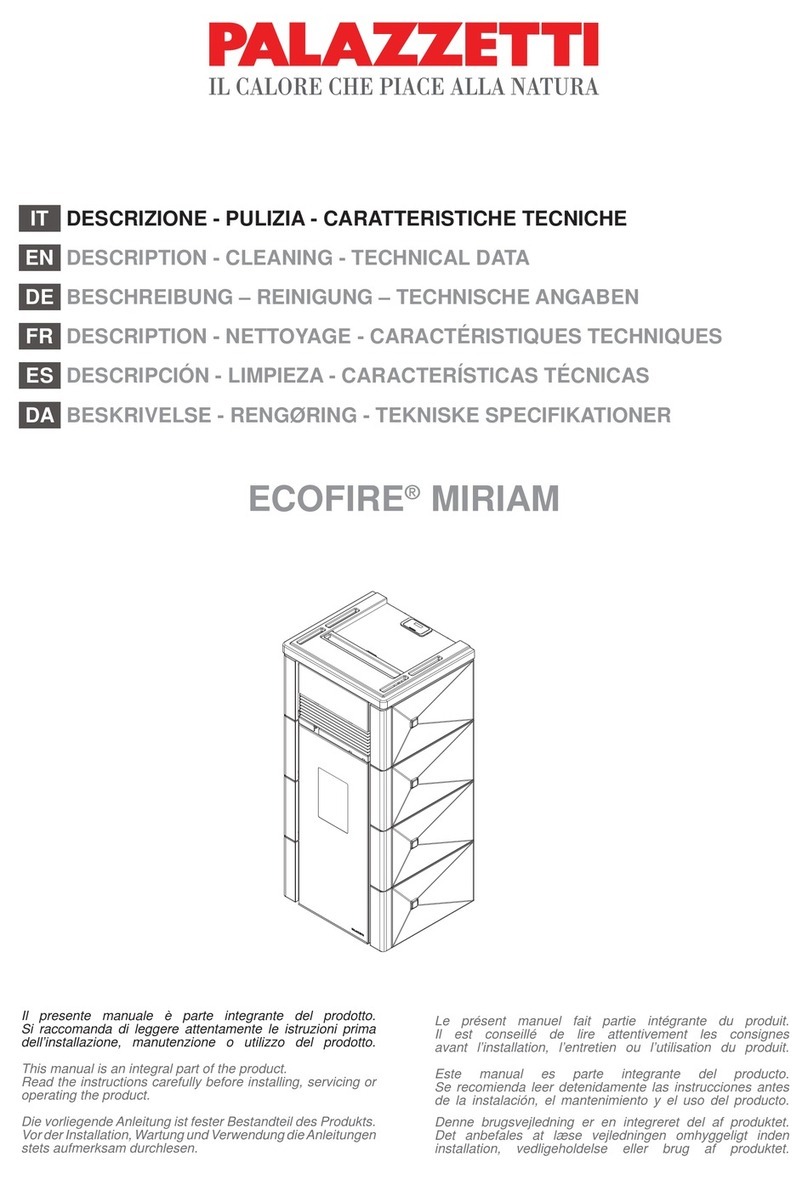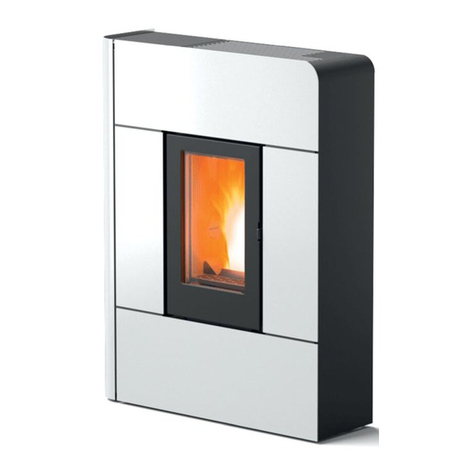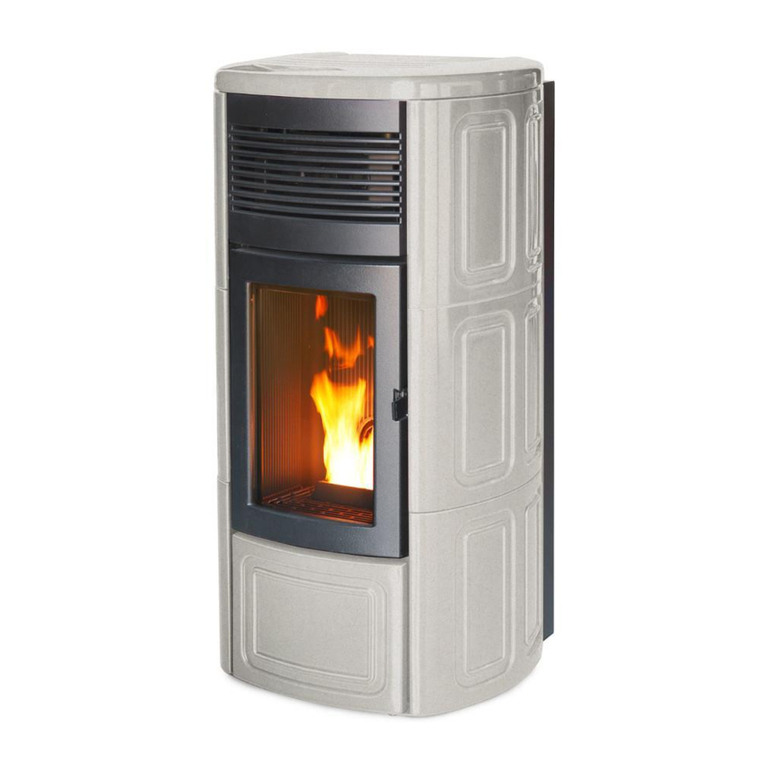PELLET STOVES Contents
INSTALLATION AND USE MANUAL
page 4
Contents Technical service - Rights reserved MCZ Group S.p.A. - Reproduction prohibited
4.4.1.General characteristics of the LCD remote control ..................................................................... 41
4.4.2.LCD Remote control ............................................................................................................... 42
4.4.3.Remote control display ........................................................................................................... 43
4.4.4.Type of batteries and replacement ........................................................................................... 44
4.5.EMERGENCY PANEL ...................................................................................................................... 45
4.6.SETTINGS TO CARRY OUT BEFORE FIRST LIGHTING ...................................................................... 46
4.6.1.Setting current day and time ................................................................................................... 46
4.6.2.Setting the temperature unit of measure .................................................................................. 46
4.7.FIRST LIGHTING .......................................................................................................................... 46
4.7.1.Turning on/off from the remote control .................................................................................... 46
4.7.2.Note on first ignition ............................................................................................................... 47
4.7.3.Start-up/shutdown from emergency panel ................................................................................ 47
4.8.OPERATING MODE ........................................................................................................................ 48
4.8.1.Manual and automatic ............................................................................................................ 48
4.8.1.1.
Changing from manual to automatic mode
......................................................................... 48
4.8.2.Manual mode ......................................................................................................................... 48
4.8.3.Automatic mode ..................................................................................................................... 49
4.8.3.1.
Changing from automatic to manual mode
......................................................................... 49
4.8.4.Automatic mode with ECO-STOP ............................................................................................. 50
4.8.4.1.
Activation /de-activation of ECO-STOP mode
...................................................................... 50
4.9.HOT AIR VENTILATION ................................................................................................................. 51
4.9.1.Menu navigation ..................................................................................................................... 51
4.9.2.AIR Version ........................................................................................................................... 51
4.9.3.COMFORT AIR Version ............................................................................................................ 52
4.10.SLEEP FUNCTION ...................................................................................................................... 52
4.11.TIMER ...................................................................................................................................... 53
4.11.1.Current date and clock ........................................................................................................ 53
4.11.2.TIMER activation and selection of a programme. ................................................................... 53
4.11.3.TIMER de-activation. ........................................................................................................... 55
4.12.PRE-SET WEEKLY AND DAILY PROGRAMMES ............................................................................... 56
4.12.1.Weekly programmes............................................................................................................ 56
4.12.2.Daily programmes ............................................................................................................... 57
4.13.PRACTICAL EXAMPLE OF WEEKLY/DAILY PROGRAMMING ............................................................ 59
4.13.1.Setting of a weekly programme ............................................................................................ 59
4.13.2.Setting of a daily programme ............................................................................................... 59
4.14.INSERTION OF KEYPAD LOCK .................................................................................................... 61
4.15.SYNCHRONIZATION OF REMOTE CONTROL................................................................................. 62
4.16.SAFETY DEVICES ....................................................................................................................... 62
4.17.ALARM SIGNALLING .................................................................................................................. 63
4.18.Exiting alarm condition ............................................................................................................... 65
4.18.1.Mechanical shutdown of the stove ........................................................................................ 65
5. MAINTENANCE AND CLEANING ...................................................................................................... 66
5.1.DAILY AND WEEKLY CLEANING BY THE USER ................................................................................. 66
5.1.1.Before each lighting ................................................................................................................ 66
5.1.2.Check every 2/3 days ............................................................................................................. 66
5.1.3.Cleaning the glass .................................................................................................................. 67
5.1.4.Cleaning of the air filter .......................................................................................................... 67
5.2.PERIODIC CLEANING BY A SPECIALISED TECHNICIAN .................................................................... 68
5.2.1.Cleaning of the heat exchanger ............................................................................................... 68
5.2.1.1.
Musa stove (steel sides) COMFORT AIR version
.................................................................. 68
5.2.1.2.
Suite and Club stove (ceramic sides) COMFORT AIR version
................................................ 70
5.2.1.3.
Suite and Club stove (ceramic sides) AIR version
................................................................ 71
5.2.1.4.
Toba Stove AIR Version
.................................................................................................... 72
5.2.2.CLEANING THE LOWER COMPARTMENT .................................................................................. 74
5.2.3.Shutting the stove down (end of season) ................................................................................. 74
5.2.4.Check of internal components ................................................................................................. 74

